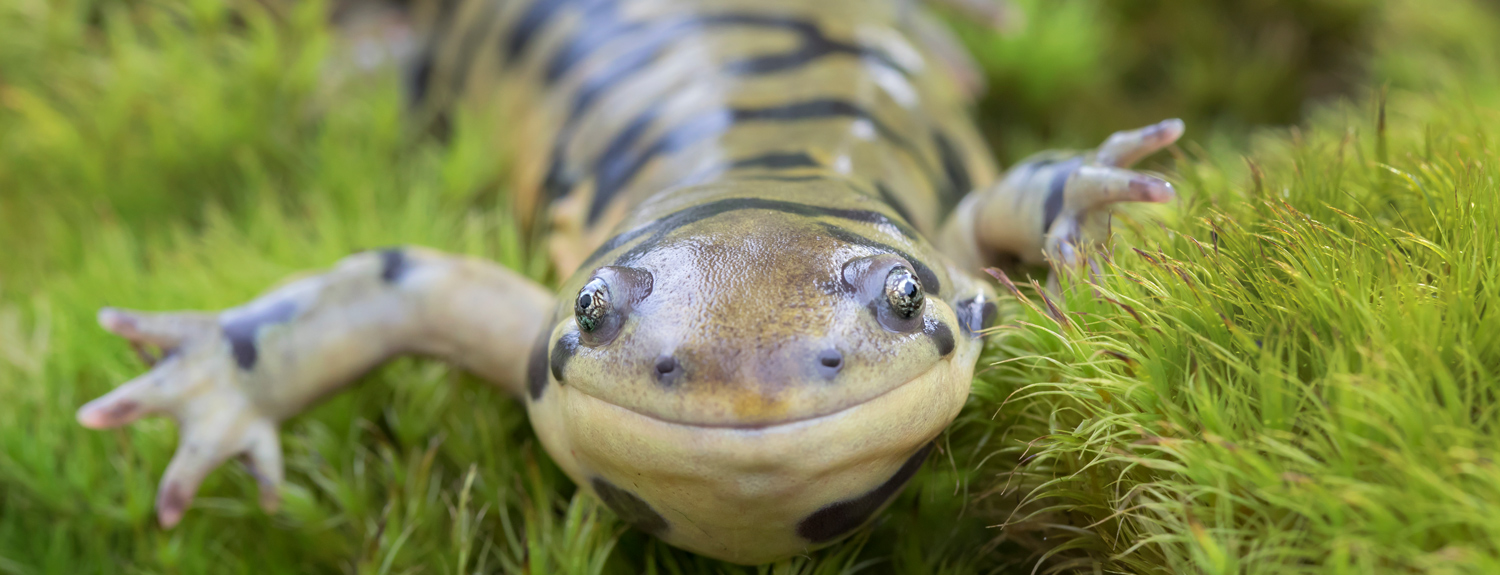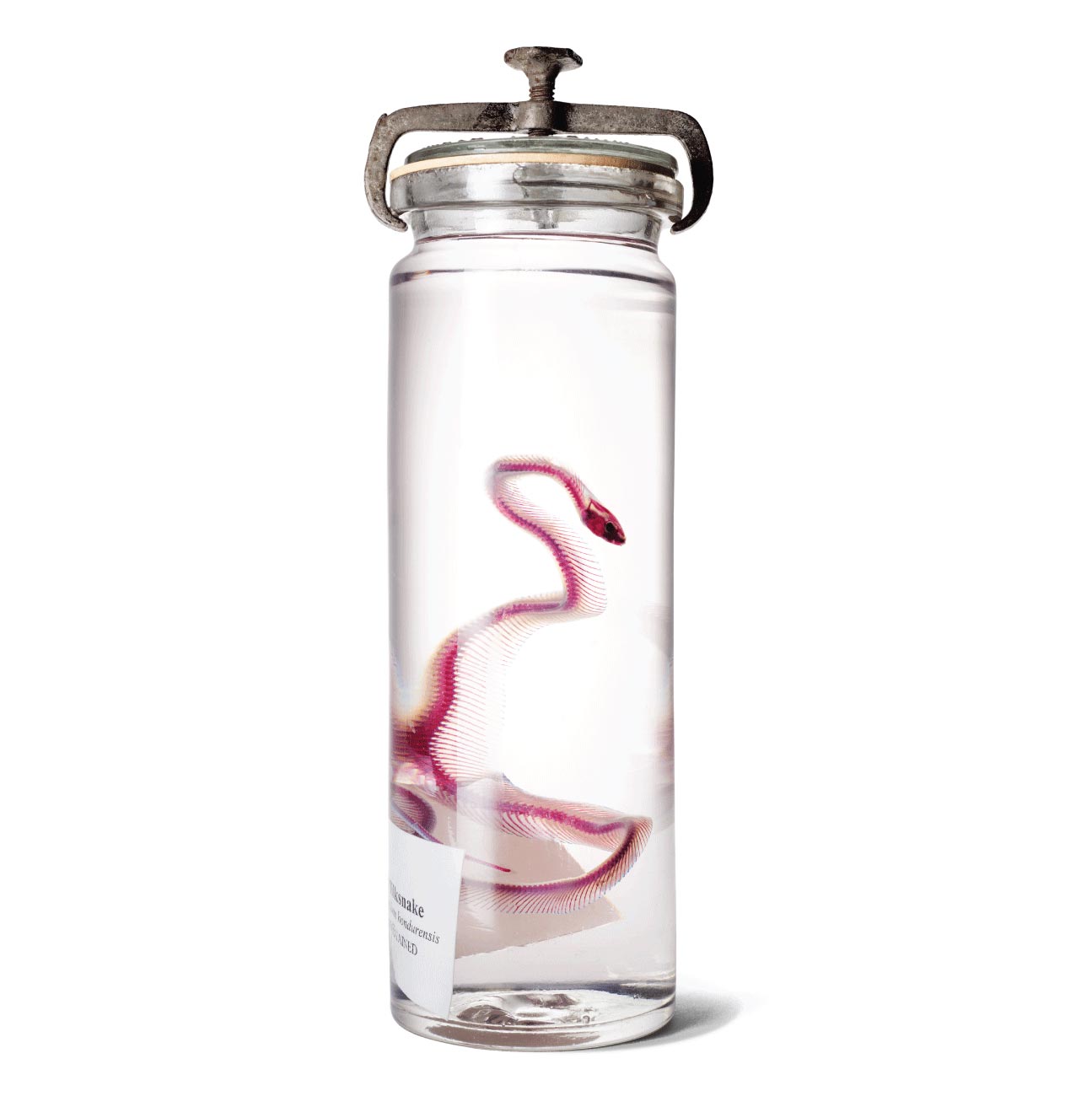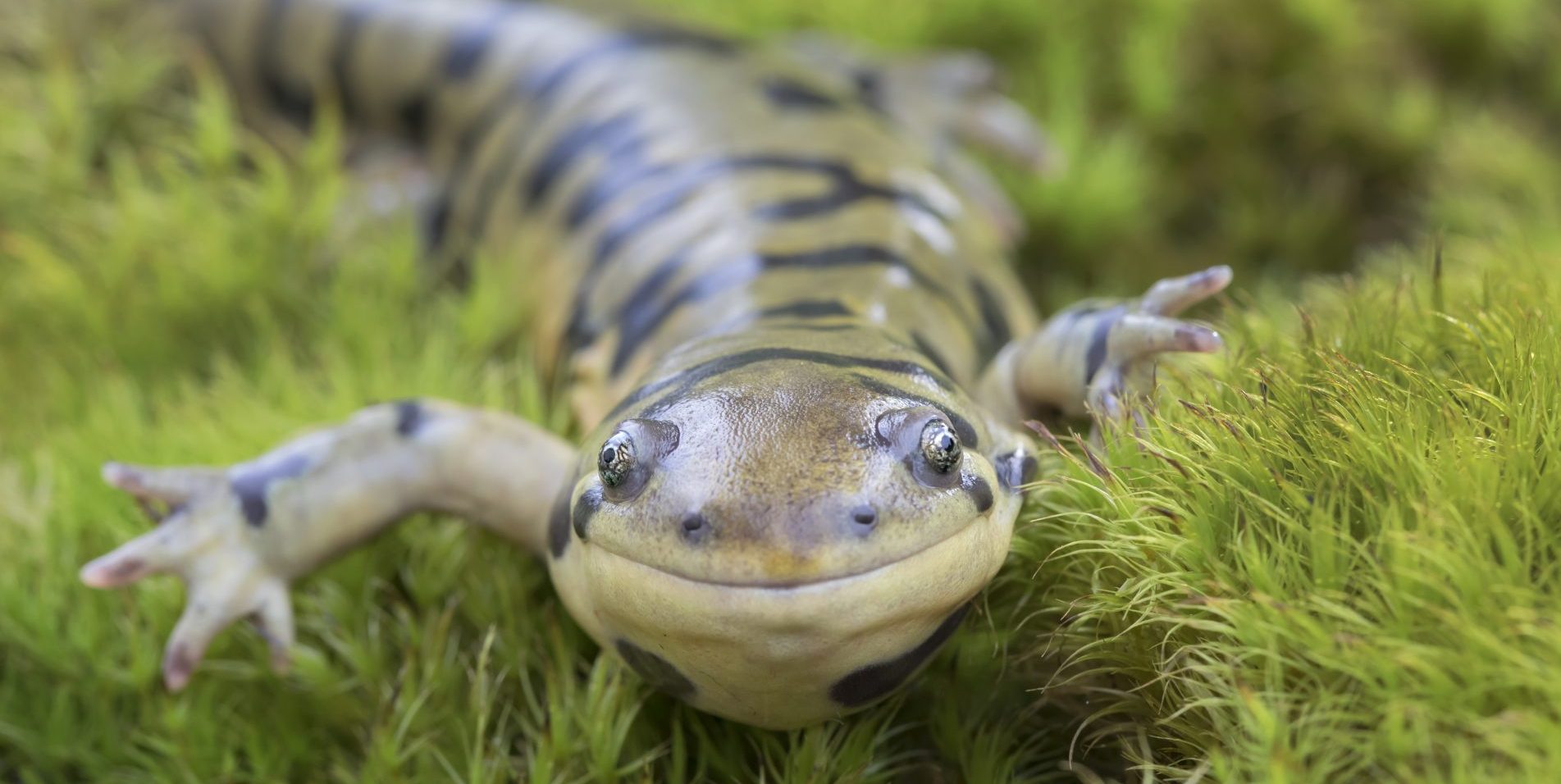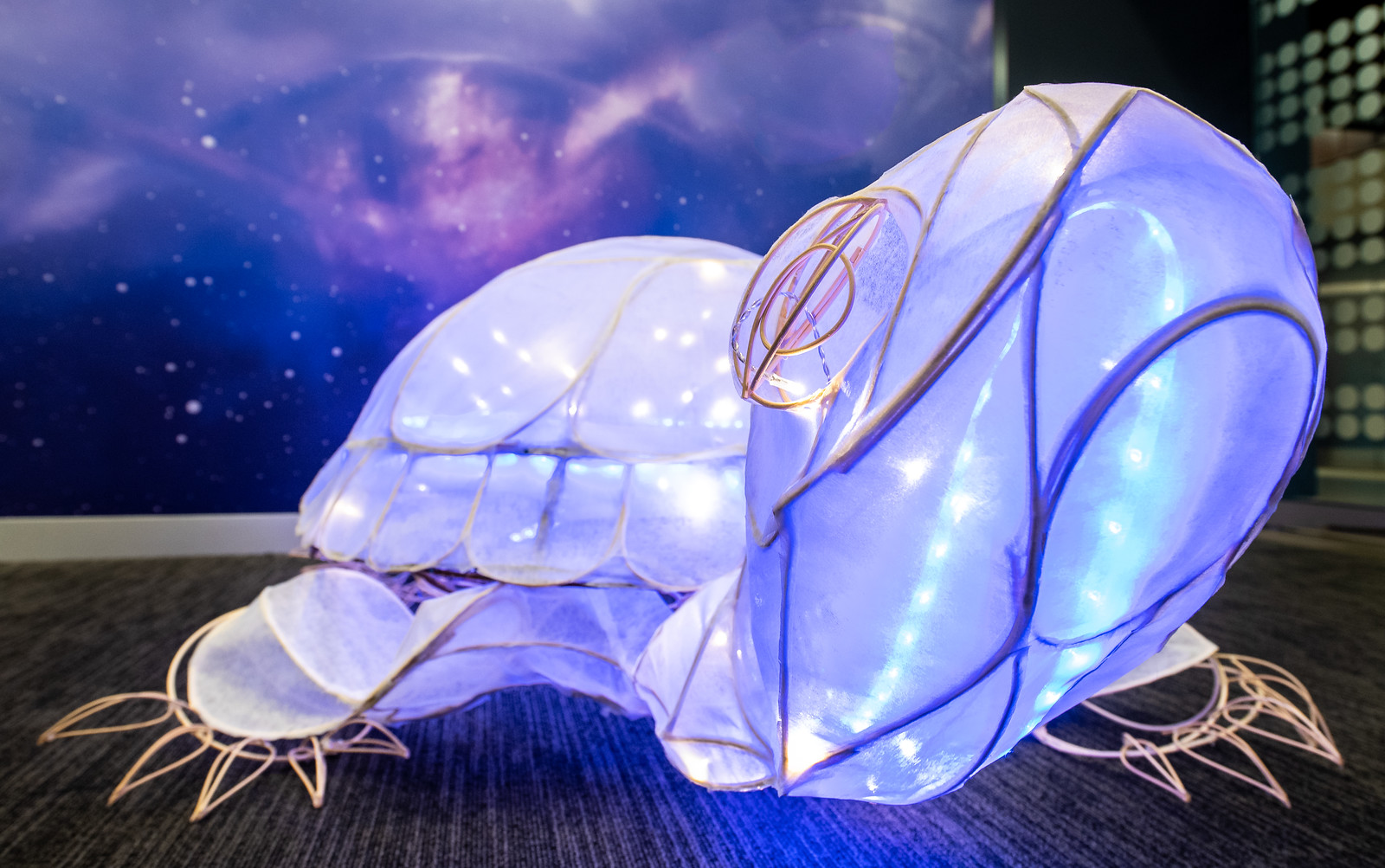
Reading the Signs from Salamanders
Get to know Ken Kozak, curator of the Bell’s amphibian and reptile collection.
Published04/30/2020 , by Eve Daniels
While the “Salamander Capital of the World” isn’t a top roadside attraction, it does tell us a lot more about the past and future of our species than dinosaur sculptures ever will (no offense to Dinny the Dino). Located in the southern Appalachian mountains, this region is a rainbow of evolutionary diversity. More species of salamander coexist here than any other place in the world—up to 18 species can be found living side-by-side at a single location. One would have to comb the entire state of Minnesota to find a total of 6 species!
Ken Kozak, curator of the Bell Museum’s amphibian and reptile collection, has taken dozens of research trips to this region to date. His first trip was in 1996, when he was pursuing his master’s degree at Clemson University.
“I was collecting salamanders from locations all along the Blue Ridge Escarpment and down into Piedmont, South Carolina, taking tissue samples to look at how distinct they were genetically, and preserving them,” Kozak says. “So early on, my research was collection-based because it was focused on documenting patterns of diversity in nature.”
Today, Kozak serves as an associate professor who teaches courses in herpetology and conservation genetics. His current research focuses on reconstructing the origins and genealogical relationships of salamander species, including “cryptic species” that are physically identical, but actually belong to different species.
Kozak and his team merge approaches from evolutionary biology and geographic-information science, which enables them to take advantage of digitized maps with climatic and environmental variables. They can analyze the data to figure out why species are found where they are now, where they likely were in the past, and where they might live in the future due to climate change.
One of Kozak’s students is even doing CT scans on the specimens, examining slight differences in head shapes, to identify evolutionary changes that may have occurred to make them better competitors.
Because amphibians respire mostly through their skin, they are very sensitive to environmental changes. This is especially true for the lungless salamanders that Kozak studies, which breathe entirely through their skin. The body temperatures of amphibians and reptiles match the place they live. If the environment warms up too much, it has a negative impact.
For these reasons and more, amphibians and reptiles are excellent bioindicators, serving as early warning signs of climatic changes, and in some cases, chemical changes in the environment.
In the mid-1990s, the Minnesota Pollution Control Agency received numerous reports of deformed frogs from across the state. Along with other scientists and agencies, the MPCA had some urgent questions: Was the rate of deformity always occuring in nature, and people just started noticing? Or was it something new and occuring at a greater rate than in the past?
To get answers, the research team looked through the Bell Museum’s extensive collection of Minnesota leopard frogs, collected in the 1960s by the late David Merrell, a University of Minnesota ecologist.
“The MPCA used our collection to determine how common deformities were back then and compared them to how common they were today,” Kozak says. “They were able to confirm that the deformities were occurring at a higher rate than in the past.”
Eventually, the researchers were able to establish a strong link between the deformities and chemicals in the water, which were weakening the tadpoles and making them susceptible to parasites and deformities.
“That’s just one example of the fortunate, but unforeseen, benefits of collecting and preserving specimens.”

For the Digital Record
In his two decades of collecting salamanders, Kozak has studied a lot of maps, hiked to a lot of streams, and rolled over a lot of logs. Typically he gathers the specimen with his hands or a dip net, puts it in a plastic container, and brings it back to the lab.
He and his fellow researchers then take tissue samples from the muscles, liver, and other organs, put the samples in a deep freezer, and preserve the remaining specimen in jars with ethanol.
“Years ago, they just preserved the specimen, but now when we sacrifice the animal, we take tissue samples first,” Kozak says. “Those samples go in separate tubes that correspond to the animal, and we use them for genetic analysis and other research.”
The Bell Museum’s amphibian and reptiles collection encompasses about 360 species from the United States, Mexico, and Southeast Asia. These include salamanders from Kozak’s research, along with frogs, toads, snakes, lizards, turtles, and more.
While the physical collection is housed in the Ecology Building on the University’s St. Paul campus, the public can explore it online via the Minnesota Biodiversity Atlas. Both professional and citizen scientists can use this data to help forecast where ecosystems and their associated species might be found in the future.




